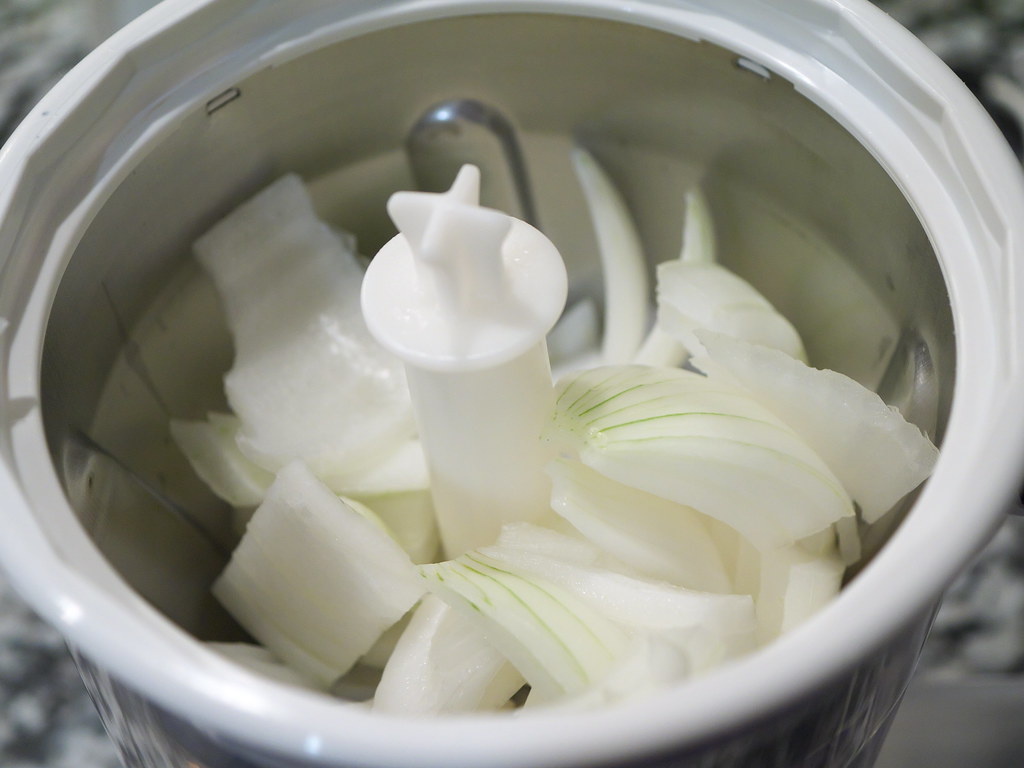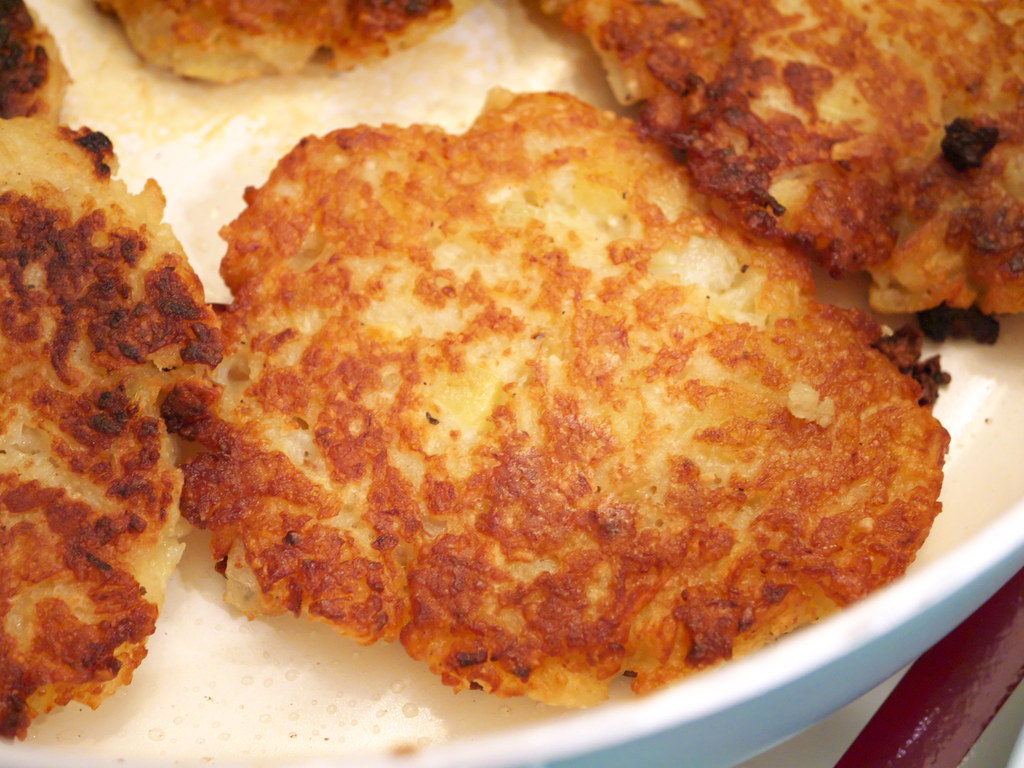I make no secret of the fact that, as a child, I foolishly missed out on sharing the joys of Jewish holiday cooking with my grandparents, older sister and mother. At that time in my life, it just didn't interest me. It was not until about 1990, after I had finished school and moved out to New Jersey, that my mother's
Multiple Sclerosis worsened to the point where she could no longer cook her traditional holiday meals. I had just begun to explore the joys of cooking, having taken my first Chinese cooking classes through the Montclair Adult School, and I was determined to keep my mother's traditions alive by learning how to cook her dishes.
Every year, I consider changing my Passover menu. And other than tinkering a little with the spices, I always wind up keeping my preparations true to the tastes and smells I grew up with. For mom.
Since I moved to Cleveland, Gefilte Fish has been a challenge. Is it well neigh impossible to purchase any quality fish at retail here. However, when I first moved here over 12 years ago, there was a supermarket called Gale's located in Beachwood that catered to the Jewish community, and which could be counted on for all of the raw ingredients I would need to recreate mom's dishes. Gale's left us a number of years ago (and became a Wild Oats -
feh!). There is a fish store in the Orthodox part of town that became my source for a few years - but they weren't interested in serving my needs. Yes, they'd get and grind my fish - but no onion ground in and no carp. My mother's recipe calls for 1 part whitefish, 1 part pike, and 1/2 part carp (for fat and texture more than taste). But their rules were not negotiable.
So, I tried another recently (at the time) opened local fish store that the newspapers raved about, in Cedar Center (long gone now). I will never forget the time I ordered 5# of fish according to the formula - and they handed me a bag with over 20 pounds - the kid who took the order had written "20" instead of "2" for one of the fishes - it was a disaster!
Finally, about 5 years ago, I learned that Cleveland's storied
Mister Brisket (AKA Sanford Herskovitz) had begun to offer ground fish for the Jewish holidays. The first time I ordered from him, he said "no carp" - I guess there is an aversion to carp in Cleveland! But after I explained that "this is how my mommy makes it" - he relented. As you will see below, the fish he special orders, fillets, and grinds is pristine. And - Mister Brisket delivers - such a deal!
And so, yesterday, I made my 2008 Passover Gefilte Fish. I began with five pounds of fish fillets, which were ground with an onion by Mister Brisket, and one whole fish (
sans fillets). I neglected to photograph the fish before I put it in the pot, so that is where we begin:

The first step in making this dish is to create a fish stock. The fish parts are placed in a large pot with sliced onion and good water, and brought to a gentle boil. After skimming, salt, pepper and sugar are added. How much? I don't know - I never measure.
 Plumps When You Cook 'Em!
Plumps When You Cook 'Em!
While the stock is simmering (for about 30 minutes), I make the fish ball mixture.
 2# Whitefish, 2# Pike, 1# Carp Fillets, Ground with Onion
2# Whitefish, 2# Pike, 1# Carp Fillets, Ground with Onion
 Blue Eggs from Breychak's Blue Egg Farm
Blue Eggs from Breychak's Blue Egg Farm
 Kosher-for-Passover Matzo Meal, Sugar, Diamond Crystal Kosher Salt
Kosher-for-Passover Matzo Meal, Sugar, Diamond Crystal Kosher Salt
I only use Diamond Crystal Kosher Salt (which is so prevalent in professional kitchens, it even got a cameo in the film "Ratatouille"). The other major player, Morton's, contains a chemical anti-caking agent (and I think it tastes nasty).
 White Peppercorn from Heather's Heat & Flavor
White Peppercorn from Heather's Heat & Flavor
 Organic Carrots
Organic Carrots
That's all there is to it, folks!
First, de-shell the eggs. For five pounds of fish, mom used 6 eggs; I used 7 because many of the Blue Eggs are a little smaller than USDA "large":

Beat until frothy; I use a handmixer:

Add the ground fish, and remember to treat it as you would ground meat for meatballs - you want to work it as little as possible.

Here is where I made a small mistake - it is easier to incorporate the seasonings into the mix with less handling if you whirl them into the eggs. But I forgot - so I added the seasonings here and gently mixed them in. How much? I start with a tablespoon of sugar, and I eyeball the salt and pepper.

I am always conservative with the seasonings and matzoh meal at first, because every batch of fish is different, and there is only one way to know if it is right - taste it (and too much matzoh meal will turn the fluffy balls into lead ballons)! The matzoh meal is next - and again, I add a bit at a time and work it in, until the mixture "feels" right.

Once the mixture feels right, it is time to taste. Unfortunately, it is no longer safe to taste this kind of fish raw, as my mother and grandmother did (even though I know that these farm eggs are safe!) - and really, tasting it raw wouldn't give you the best feel for it anyway. So, I boil water in a small saucepan, pinch out a small ball of the mixture (which lets me test the matzoh meal-iness) and cook it for a few minutes. After tasting the cooked fish, I adjust the seasoning to taste - this time, I got it perfect on the second try!
No photos of the next step, because it takes two hands and makes a mess of them! I put some Kosher for Passover cooking oil in a dish, and dip into it periodically to keep the mixture from sticking to my hands. (Its not even Seder night and I'm dipping already!) I form the fish into ovals, which is how mom made them, and gently deposit each oval into the fish stock, which is now at a strong simmer. Once all of the fish balls are in the pot, I put on the lid and cook 1.5 hours.

During the first cooking time, I prep the carrots. After 1.5 hours, I add the carrots to the pot and re-lid. The fish balls are floating happily! I cook it another 1.5 hours (which is longer than mom cooked it, but I saw an elderly grandma make fish with Joan Nathan on PBS a few years ago, and she swore by a 3 hour cooktime). When cooking time is over, I use a slotted spoon to carefully remove the fish and carrots, taking care to examine for shrapnel from the skeleton. My mother said, as a girl, nibbling fish bits off of the bones was her favorite part of making this dish - me - even though I'm always tempted to save the stock and meaty bits for another use - they always wind up in the compost. The house just smells too much like fish after the cooking is done for me to find it appealing.



Cooking for the Jewish holidays brings me great joy; my only sadness is that I cannot share this food with mom, who still lives in NY 450 miles away. But, as this post demonstrates, making your own Gefilte Fish is not so hard as you might think (provided you have a good fishmonger, or a moonlighting butcher!), and you will never eat jarred fish again after you have tasted this!















